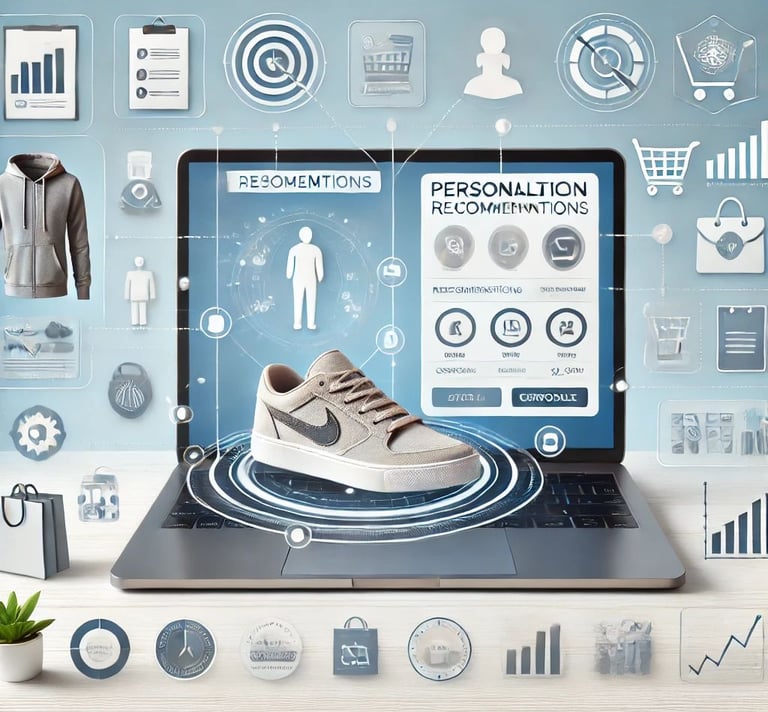Personalization and Customization in Marketing: Why They Matter
In the fast-paced world of modern marketing, capturing a consumer’s attention requires more than flashy advertisements or generic messaging. Customers expect brands to understand their preferences, anticipate their needs, and deliver experiences that feel personal. This is where personalization and customization come into play. These strategies have become essential for building loyalty, increasing engagement, and driving sales in today’s competitive landscape.
Hessam Mahmoodi
12/24/20242 min read


Understanding Personalization and Customization
While often used interchangeably, personalization and customization have distinct differences:
• Personalization involves tailoring experiences, content, or recommendations based on data and insights about a specific individual. This is often automated and happens on the brand’s end, using algorithms, customer data, and behavior analysis.
• Example: A streaming service recommending movies based on your viewing history.
• Customization gives customers the power to tailor products or services to their own preferences. It puts the control in the hands of the user.
• Example: Allowing customers to design their own sneakers online.
Why Personalization Matters in Marketing
1. Improves Customer Experience
Consumers feel valued when brands cater to their specific preferences. From tailored emails to curated product suggestions, personalization reduces decision fatigue and makes shopping enjoyable.
2. Boosts Conversion Rates
Personalized experiences guide customers toward making decisions. For instance, abandoned cart emails reminding customers of their specific selections have been shown to increase purchase rates significantly.
3. Builds Loyalty and Trust
When a brand consistently delivers relevant content and solutions, customers are more likely to return. Personalization fosters a sense of connection, which strengthens loyalty over time.
4. Enhances Marketing ROI
Targeted campaigns reduce wasted ad spend by focusing on the right audience. By addressing specific needs, brands achieve higher engagement and better results from their efforts.
The Power of Customization
1. Empowers Customers
Customization lets customers create something unique. Whether it’s a personalized playlist or a custom-built laptop, this process gives them a sense of ownership.
2. Differentiates Your Brand
Offering customizable options sets your brand apart. In competitive markets, the ability to provide tailored products can give you an edge.
3. Drives Word-of-Mouth Marketing
People love sharing unique creations. Customization often leads to social media-worthy moments, amplifying brand awareness organically.
Examples of Personalization and Customization in Action
• Spotify Wrapped: An annual personalized playlist showcasing a user’s music habits.
• Nike By You: A platform where customers can design their own shoes.
• Amazon’s Product Recommendations: Suggestions based on browsing history and previous purchases.
• Coca-Cola’s “Share a Coke” Campaign: Allowing customers to find bottles with their names or order custom labels.
Challenges to Consider
1. Data Privacy Concerns
With personalization relying heavily on data, it’s crucial to balance relevance with respect for user privacy. Transparency about data usage builds trust.
2. Over-Personalization
When done poorly, personalization can feel invasive. Brands must find the right balance to avoid overwhelming or alienating customers.
3. Cost and Complexity
Implementing customization tools or building personalization algorithms can be resource-intensive. A strategic approach is necessary to ensure ROI.
Best Practices for Success
1. Invest in Data
Use analytics and customer insights to drive your personalization efforts. The more you know about your audience, the better your results.
2. Prioritize User Experience
Both personalization and customization should enhance the customer journey, not complicate it. Keep interfaces intuitive and recommendations relevant.
3. Test and Iterate
Continuously gather feedback and refine your strategies. Consumer preferences evolve, and so should your marketing approach.
4. Be Transparent
Let customers know how their data is used and provide options for opting out. Transparency fosters trust and long-term loyalty.
The Future of Personalization and Customization
As technology evolves, the opportunities for personalization and customization are endless. AI, machine learning, and predictive analytics are enabling brands to deliver hyper-relevant experiences in real time. Meanwhile, augmented reality (AR) and virtual reality (VR) are transforming how customers design and interact with customized products.
In this dynamic landscape, brands that embrace these strategies effectively will stand out, foster deeper connections, and drive sustained growth. By putting the customer at the center of every interaction, personalization and customization are not just trends—they are the future of marketing.
Socials
Follow our socials for updates!
CONTACT
Connect
© 2025. All rights reserved @ MLT Marketerra Marketing Solutions.
